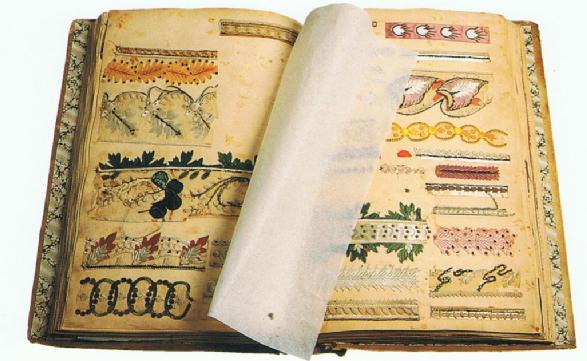The East - West Dialogue: Shaping Manufacture
How were design and production of objects managed; were there differences between the supply of large bulk orders and one off orders? How was information transmitted? How did ordering systems and quality control/rejection work?

Brigitte Nicolas, Head Curator, Musée de la Compagnie des Indes, Lorient,
‘The secret world of East-India-Company imported Indian textiles'
From 1660 onwards, with the aid of the East India Companies, the European import of Indian textiles began to expand rapidly.
Kirsten Toftegaard, Danish Museum of Art & Design, Copenhagen,
‘Encounters in patterns between East and West’
This paper will try to explore some features in patterns for the printed textile made in India in the seventeenth and eighteenth century for export especially to Europe. By looking in pattern books and illustrations of plants and flowers from the period the paper tries to analyze some of the recognizable features in the way the plants are drawn. The paper is based on an ongoing research for a coming exhibition at Designmuseum Danmark in spring 2012 and as such must be considered as work in progress.
Jessica Harrison-Hall, Curator, Department of Asia, British Museum, London,
‘Distinctions in design transfer’
This short paper distinguishes between and discusses three quite different types of design transfer. Firstly there are those designs from 1520 to 1850 which are commissioned, produced and supplied to a particular identifiable individual customer or regional market. Secondly there are those designs which are ordered for a particular market or consumer but are perhaps considered exotic/attractive by other clients and sold to overlapping markets, often stimulating the rapid production of local copies. Thirdly there are those transfers of design which occur with a time lag of up to one hundred years. The British Museum, V&A Museum and National Museum of China are collaborating to produce an exhibition for the summer of 2012 in Beijing. This show will present ceramics produced for the elite of geographically diverse markets for a general audience that rarely has an opportunity to see such material within China.
Luisa Mengoni, Victoria and Albert Museum, London
‘Special orders and transmission of designs from Europe to China’
A large number of 'private orders' commissioned in China included porcelain with patterns and shapes taken from or inspired by European sources, such as prints, drawings and designs. This topic has generally been discussed as an aspect of the China trade, but less in connection with the production of similarly decorated ceramics made at factories in the Netherlands, England, France, Germany and Italy.
This contribution aims to locate the commission and export of Chinese porcelain with European designs in the context of a wider phenomenon of consumption and changing production patterns that also affected European ceramic factories during the end of the seventeenth century and the first half of the eighteenth century. It will explore to what extent new fashion trends and market demands across Europe, combined with the circulation and availability of printed illustrated material and new economies of design work, affected and shaped the nature of 'special orders' made in China and their desirability as commodities to be ordered and sold in the European market.
